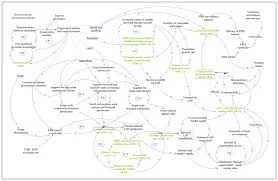Definition: Agricultural Investment Analysis is the process of evaluating the financial viability of an investment in the agriculture sector. This analysis helps determine if a proposed investment, such as buying new equipment, expanding a farm, or entering a new market, is financially sound and aligns with your goals.
Click the Translate button(see right) on this post to set your Own Language to understand more perfectly!!
Agricultural Investment Analysis Calculator
Definition Continue: Agricultural Investment Analysis
Agricultural Investment Analysis is the process of evaluating the financial viability of an investment in the agriculture sector. This analysis helps determine if a proposed investment, such as buying new equipment, expanding a farm, or entering a new market, is financially sound and aligns with your goals.
Key Properties:
Focuses on future cash flows: Agriculture involves long-term projects with initial costs and returns spread over several years. The analysis forecasts future cash inflows (revenue from sales) and outflows (expenses) associated with the investment.
Considers time value of money: A dollar today is worth more than a dollar tomorrow due to potential earning opportunities. The analysis uses discounting techniques to account for this time value and express future cash flows in today's dollars.
Incorporates risk: Agriculture is susceptible to various risks like weather fluctuations, pest outbreaks, and price volatility. The analysis considers these risks by adjusting the discount rate or using sensitivity analysis to see how outcomes change under different scenarios.
Supporting Equation:
One common method for evaluating agricultural investments is the Net Present Value (NPV) analysis. NPV calculates the present value of all future cash flows associated with the investment. A positive NPV indicates the investment is expected to generate a profit, while a negative NPV suggests a potential loss.
NPV = Σ (CFt / (1 + r)t) - Initial Investment
Where:
CFt = Cash flow in year t
r = Discount rate (reflecting time value of money and risk)
t = Year (from year 1 to the investment's lifespan)
Example:
A farmer is considering investing in a new irrigation system costing $20,000. The system is expected to increase crop yield by 10%, leading to an additional $5,000 annual profit for 5 years. Assuming a discount rate of 8%:
Year 1: Cash flow = -$20,000 (initial investment)
Year 2-5: Cash flow = $5,000 (additional profit)
NPV = (-$20,000 / 1.08) + ($5,000 / 1.08^2) + ($5,000 / 1.08^3) + ($5,000 / 1.08^4) + ($5,000 / 1.08^5)
Calculating the NPV, you might find a positive value, indicating the irrigation system could be a profitable investment. However, remember to consider other factors like maintenance costs and potential risks before making a final decision.
Additional Considerations:
Project payback period: This is the time it takes for the investment to recover its initial cost.
Internal rate of return (IRR): This is the discount rate that makes the NPV equal to zero. An IRR greater than the discount rate suggests a profitable investment.
Sensitivity analysis: This involves analyzing how changes in variables like yield increase or discount rate affect the NPV.
By considering these properties, equations, and additional factors, agricultural investment analysis equips you with the tools to make informed financial decisions that drive the success of your agricultural venture.
How many ways to Earn Money using the Agriculture Investment Analysis Calculator????
An agricultural investment analysis calculator itself isn't a way to directly earn money, but it's a powerful tool that can help you identify profitable opportunities in several ways:
1. Evaluating Potential Investments:
The calculator helps you assess the financial viability of various agricultural ventures. By analyzing projected costs, returns, and risks, you can identify investments with a high potential for profit.
Here are some examples:
New Equipment: Analyze if buying new harvesting machinery or irrigation systems will generate enough additional income to justify the investment.
Expanding Operations: Assess the profitability of increasing crop acreage, starting a new livestock operation, or entering a new market (e.g., organic farming).
Improving Infrastructure: Calculate the return on investment for building greenhouses, storage facilities, or processing plants to add value to your products.
2. Optimizing Existing Operations:
The calculator can be used to analyze your current practices and identify areas for improvement:
Cost Reduction: Analyze different fertilizer or pesticide options to find the most cost-effective solution with good yield results.
Resource Allocation: Evaluate if shifting resources between crops or livestock production can maximize profits.
Pricing Strategies: Analyze production costs and market trends to determine the most profitable pricing point for your products.
3. Risk Management:
By incorporating risk factors into your calculations, you can use the tool to:
Compare Risk vs. Reward: Analyze how potential risks like weather fluctuations or disease outbreaks can affect the profitability of an investment.
Develop Contingency Plans: Identify investments with lower risk profiles or use the tool to assess the financial impact of implementing risk mitigation strategies (e.g., crop insurance).
4. Securing Funding:
The analysis generated by the calculator can be used to create a compelling case for investors or lenders. By presenting a clear picture of the projected returns and potential risks, you can increase your chances of securing funding for your agricultural ventures.
Remember: The calculator is a decision-making aid, not a guarantee of success. Combine its insights with your own agricultural expertise and market research for the best results.
Do YOU Want To Earn Money In Various Ways, Click The Link & Explore Your Field of Interest!!!







